Cast Iron Care: The Ultimate Dos and Don’ts for Pristine Pans (Guide)
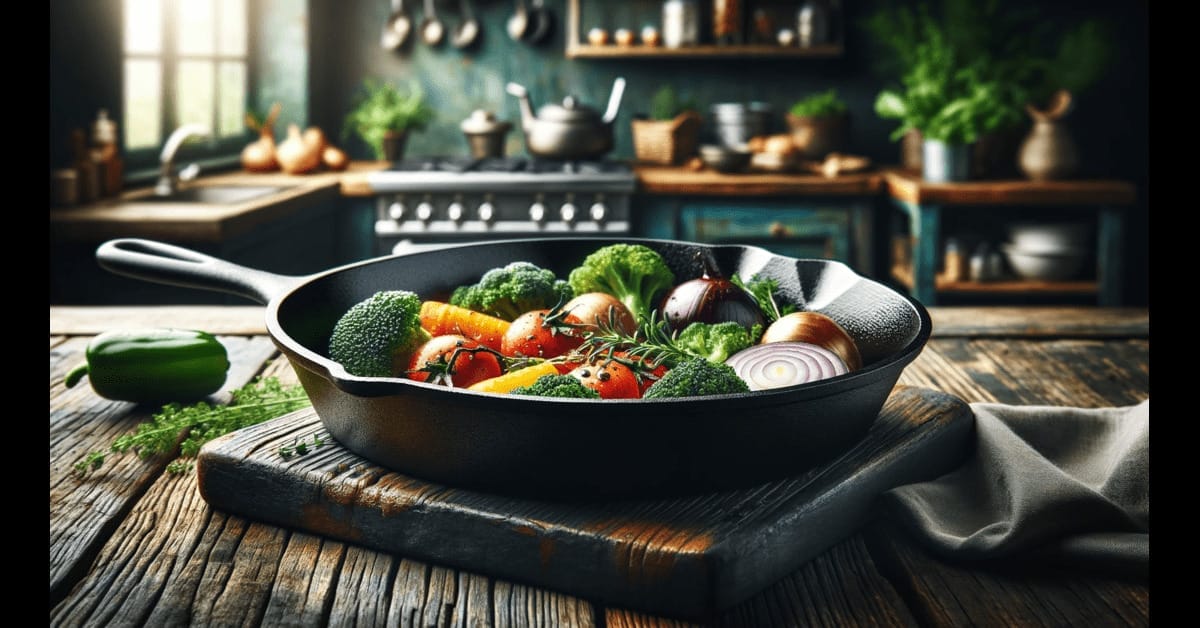
In kitchens, cast iron pans are the unsung heroes, ready to sear, bake, fry, and grill to perfection. But just like any great tool, they require a bit of know-how and some hands-on attention to shine.
Here’s What’ll be Going Through to Keep Them in Tip-Top Shape:
- ✅ Season your New Cast-Iron Cookware Before You Use It. 🍳✨
- ✅ Reseason if your pan needs it. 🔁🍳
- ✅ Clean your skillet as soon as you’re done cooking. 🧼
- ✅ Don’t throw out your pan if it develops rust. 🍳
- ❌ Don’t send cast-iron cookware through the dishwasher. 🧼
- ❌ Don’t let it stay wet. 💦
Let’s grab that skillet and begin the journey to cast iron glory!
Do Begin with a Proper Seasoning of Your New Cast Iron
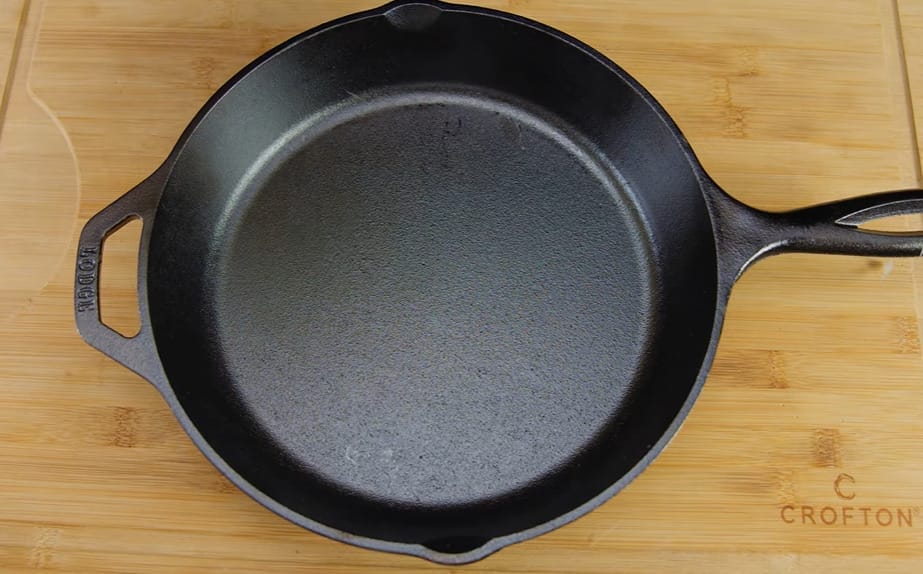
When you buy a new cast-iron pan, it might be advertised as nonstick or pre-seasoned. However, it is still important to season it before using it for the first time.
Seasoning involves baking oil into the pan at a high temperature to seal the cast iron, which protects the pan from moisture and makes it nonstick. “The more you cook, the better it gets.”
Here are the steps to season your new cookware:
- Step 1: Preheat your oven to 450 degrees Fahrenheit.
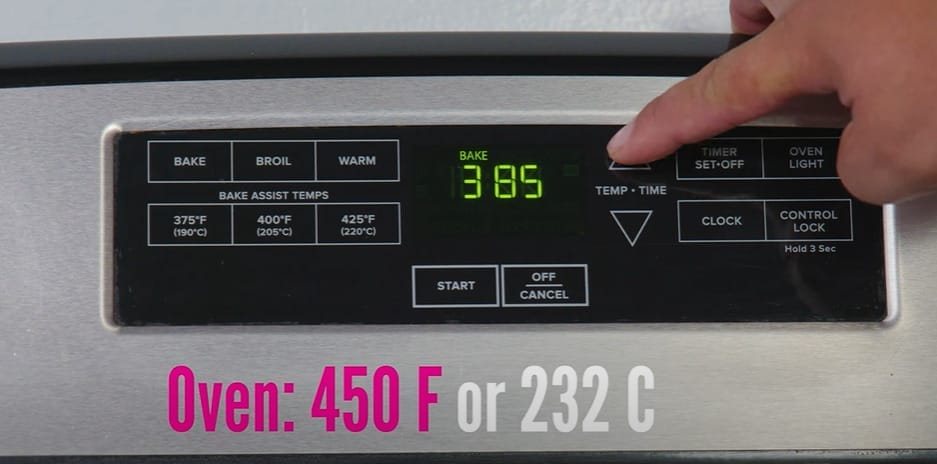
- Step 2: While the oven is warming up, wash the skillet and dry it thoroughly.

- Step 3: Apply a thin vegetable oil coating inside and outside the skillet using a paper towel. Be careful not to use too much oil, as this can make the pan sticky.
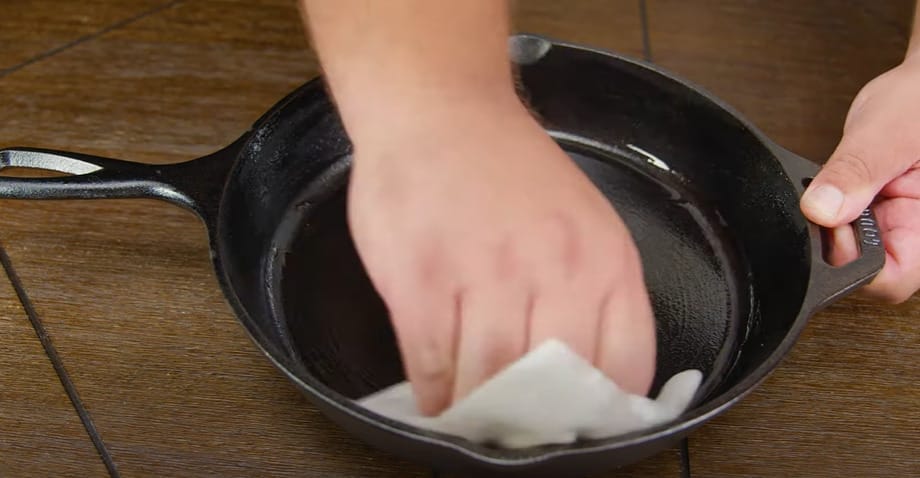
- Step 4: Place the skillet upside down on the middle rack in the oven, and put a sheet of aluminum foil over the bottom rack to catch any drips.
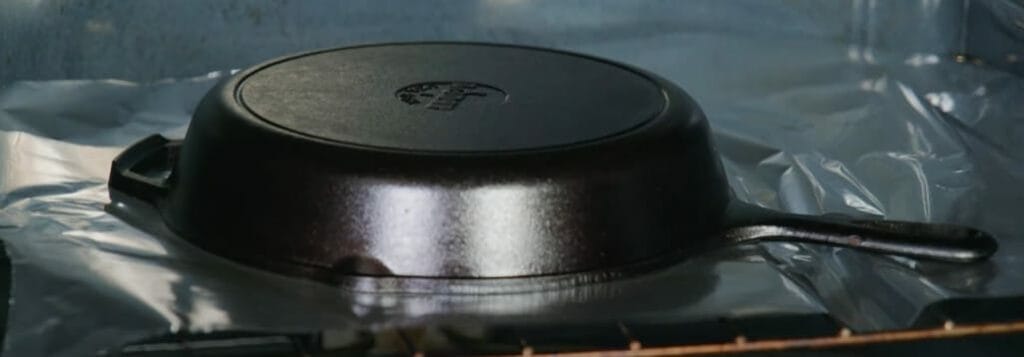
- Step 5: Bake for one hour, then turn off the oven and let the skillet cool completely before removing it.
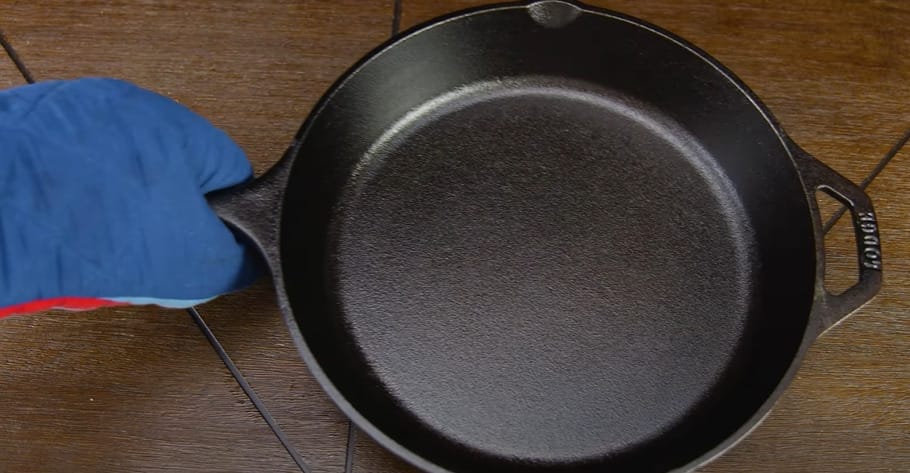
It’s important to note that seasoning is not a one-time event. You should repeat the process periodically, especially if the pan becomes sticky or rusted.
Do Reseason to Maintain the Perfect Patina

If your cast iron pan starts to feel sticky, lose its nonstick properties, or look gray, it’s time to reseason it.
To do this, I recommend scrubbing it thoroughly with a touch of dish soap and a plastic scrub brush, drying it completely, and then seasoning it just as you would before use.
While soap can remove the seasoned nonstick coating, it can be used to prepare cast iron just before reseasoning. It’s important to note that reseasoning can help restore your pan’s nonstick surface and prevent food from sticking.
Do Clean Immediately After Use for Lasting Quality
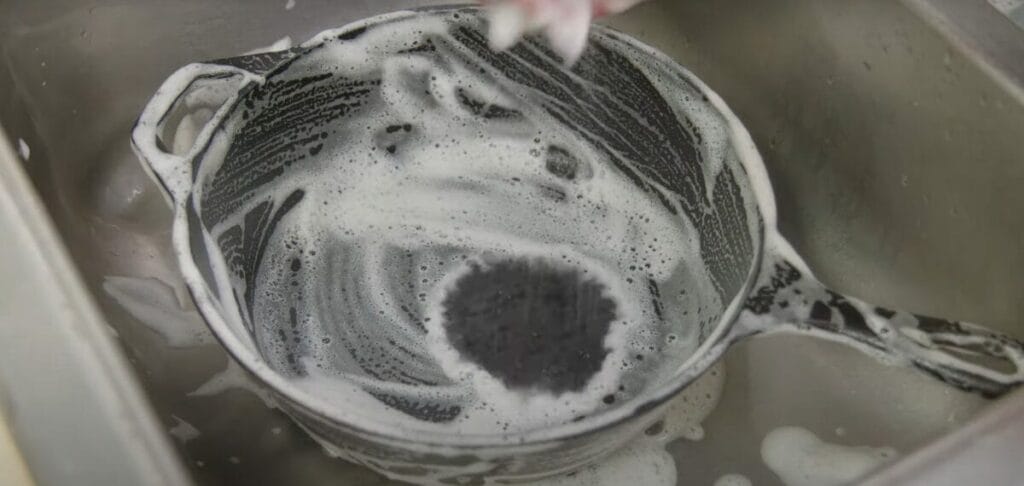
As a cast iron enthusiast, I can tell you that cleaning your skillet as soon as you’re done cooking is crucial in maintaining its longevity.
When it comes to maintaining your cast iron cookware, a little know-how goes a long way to keep those pans pristine for years.
- Rinse While Warm: Rinse your pan while it’s still warm (not too hot) as soon as you’re done cooking.
- Use a Card for Scraping: If you need to dislodge cooked-on food, try using a card instead of a store-bought scraper.
- Salt, Oil, and Scouring for Scrubbing: A handful of sea salt, vegetable oil, and a plastic scouring pad or poly dish scrubber will scrub off what’s left.
- Non-abrasive Sponge for Tough Stains: Use a non-abrasive sponge or a Dobie sponge with warm water and a little elbow grease for tougher stains.
- Chainmail Scrubber for Stubborn Stains: You can also use a chainmail scrubber or a pan scraper for more stubborn stains.
- Dry Immediately After Washing: When cleaning, rinse the pan with warm water and dry it immediately with a paper towel or a dishcloth.
- Re-season After Washing: Make sure to re-season your skillet after every wash by rubbing it with a light coat of vegetable oil and placing it over a burner set on low heat for three to four minutes.
Remember, cleaning your cast iron skillet properly and regularly is the key to maintaining it. Following these simple steps can keep your skillet in top shape for years!
Don’t Compromise Your Cookware in the Dishwasher
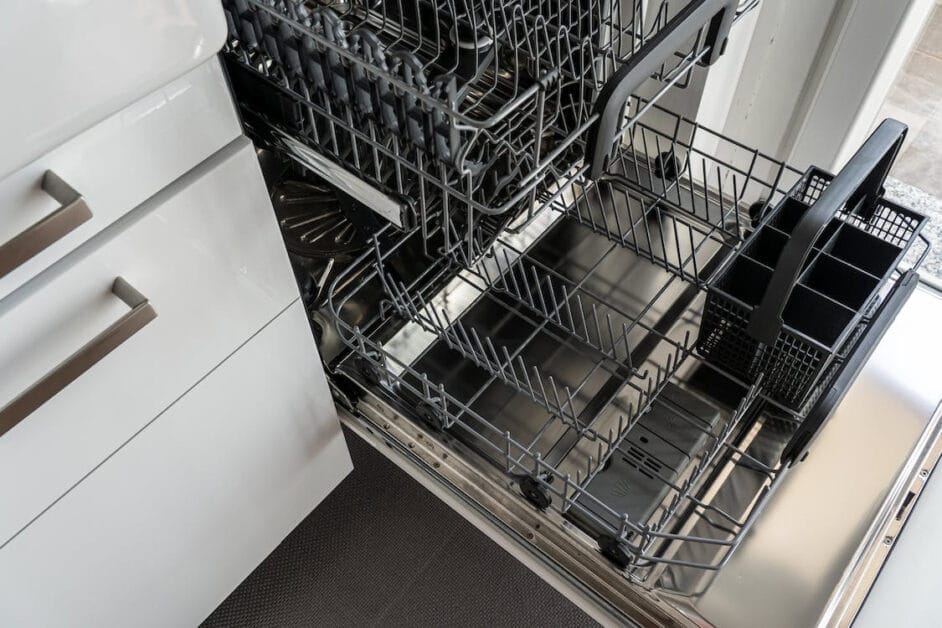
I know throwing your cast-iron cookware in the dishwasher can be tempting to save time, but it’s not worth it. The harsh detergents and abrasive scrubs will break down the seasoning, removing your cast iron’s nonstick coating and flavor-enhancing properties.
Instead, wash your cast-iron cookware by hand using a mild soap and warm water. Don’t use anything too harsh or abrasive, as it can damage the pan’s surface. And never soak your cast iron in water, as it can cause rust to form.
Remember, your cast-iron cookware is an investment that will last a lifetime if you take care of it properly.
Don’t Let Your Pan Linger in Wetness
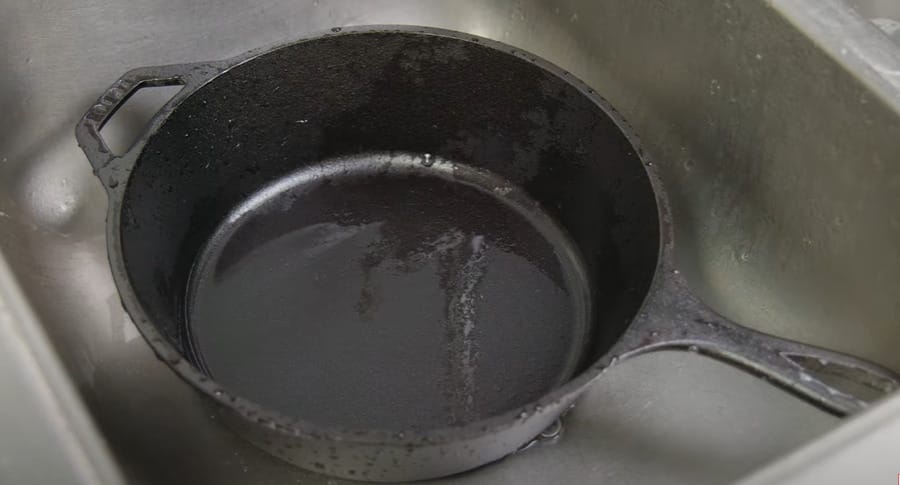
As a cast iron enthusiast, I know the importance of keeping my cookware dry. Cast iron rusts when exposed to water for too long, so it’s important to avoid letting it stay wet.
I always dry my cast iron immediately after washing it to prevent rust and preserve the nonstick surface. This helps to keep my cast iron in top condition, ready for searing, baking, frying, and other non-water-based cooking.
Remember, drying is just as important as cooking when it comes to cast iron!
Don’t Discard Rusty Cast Iron; Revive It Instead
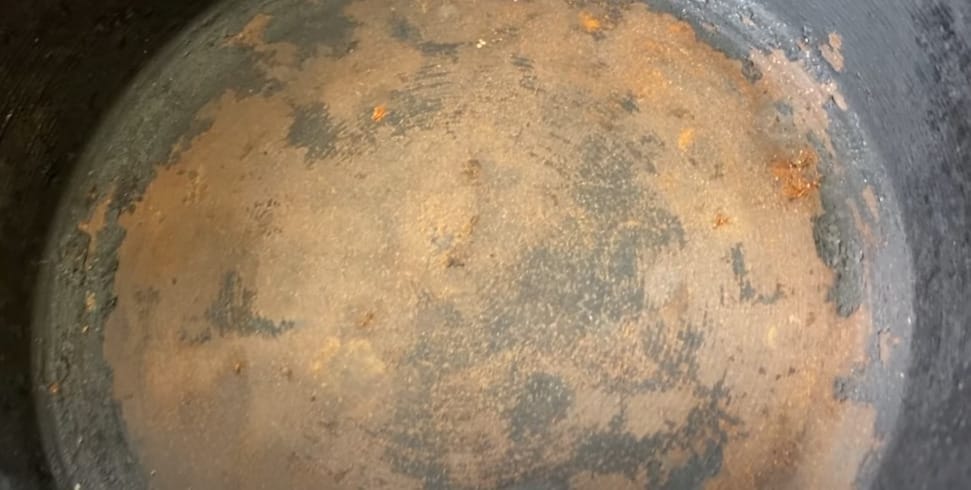
So you’ve noticed some rust on your cast-iron skillet. Don’t panic! Rust is a common issue with cast-iron cookware, but it’s not the end of the world. It’s not even close.
You don’t have to throw out your pan just because it’s developed rust. With some elbow grease, you can get it looking as good as new.
- Step 1: Clean all rust with a metal scouring pad or fine steel wool.

- Step 2: Wash the pan thoroughly using water, a soft brush, and soap.
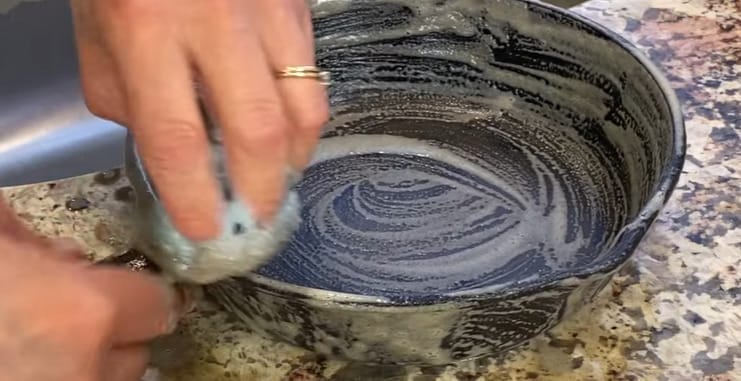
- Step 3: Rinse and dry the pan immediately, then reseason it as if you’re seasoning it before first use. (Follow the steps in Proper Seasoning above.)
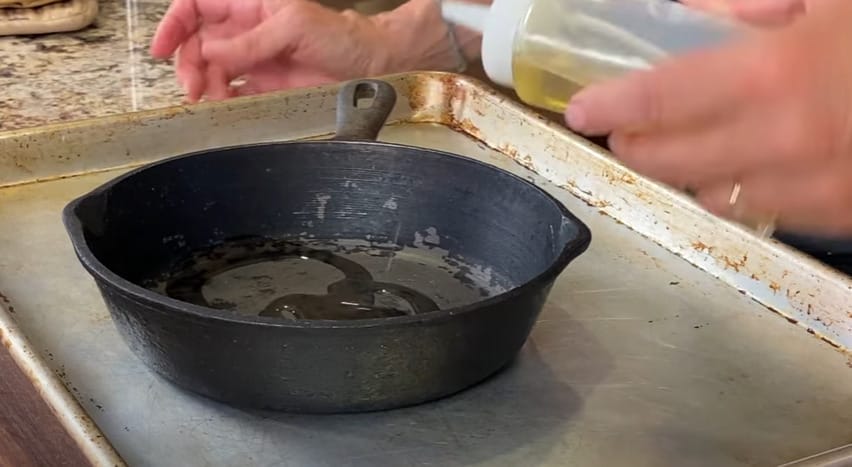
Scrubbing and reseasoning can almost always give cast-iron cookware a new life. So don’t hesitate to give your old cast-iron cookware a second chance.
It’s worth it for the great cooking opportunities and unlimited second chances.
Cast Iron Skillet Maintenance: Smart Tips and Savvy Tricks
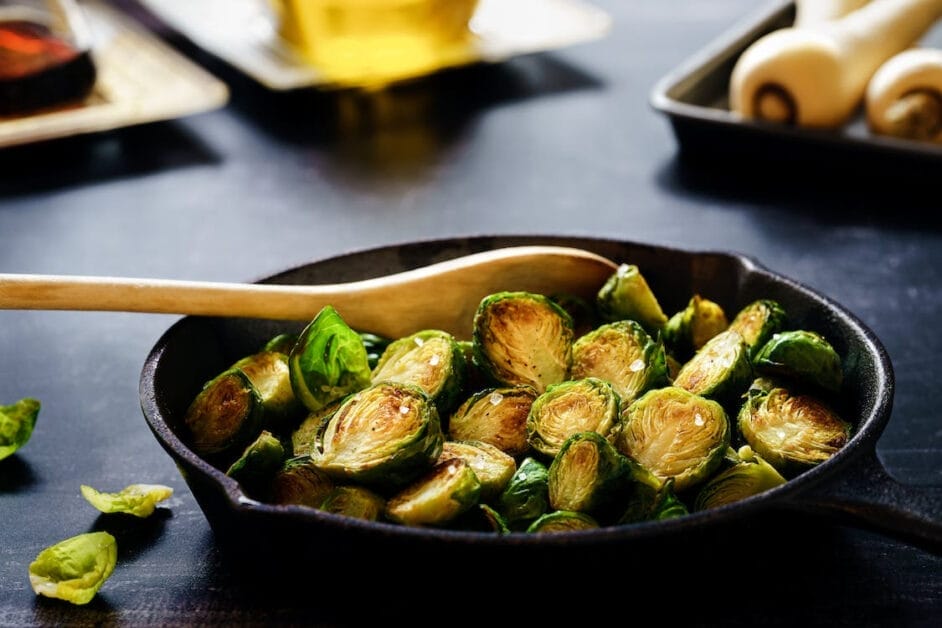
Let’s roll up our sleeves and dive into these smart tips and savvy tricks to elevate your cast iron experience from good to great.
- Embrace the Potato Polish: When your skillet has seen a heavy cooking session, and the remnants seem glued on, don’t reach for the soap just yet. Slice a potato in half, sprinkle your skillet with kosher salt, and use the spud to scrub. The salt scours, the potato lifts and brightens, and your seasoning stays sacred.
- Oil It Right: Post-wash, while the pan is still warm, a dab of oil keeps the iron in prime condition. Use a paper towel to spread a thin layer of your chosen oil across the surface. This simple habit is your best defense against rust and wear.
- Avoid the Soak: Submerging your skillet in water is like soaking your smartphone — it won’t end well. If you must soak, a brief dip is all you should allow. Anything more is an invitation for rust to settle in.
- Low and Slow Dry: Place your skillet on low heat to evaporate any remaining moisture after cleaning. This step is a game-changer, ensuring no single drop lingers to mar the metal.
- The Spatula Scrap: During cooking, use a wooden or metal spatula with a flat edge to scrape the bottom of the pan. This proactive approach keeps food from sticking and makes cleanup a breeze.
- Store with Care: Humidity is the enemy of iron. Store your skillet in a dry place and, if stacking pans, slip a paper towel in between to ward off moisture and scratches.
- Seasoning Sensibility: Remember, the more you cook, the better your seasoning will become. Each dish adds another layer to the flavor story of your skillet. So keep cooking, and let your cast iron tell its tale.
- The Right Heat: Cast iron conducts heat like a dream, so you rarely need the high setting. Cooking on medium heat not only prevents burning but also protects the seasoning.
Cast Iron Skillet Maintenance Schedule
Welcome to your ultimate guide for keeping that trusty cast iron skillet in tip-top shape. From the daily cool-down to the annual once-over, follow these steps to ensure your skillet’s longevity. Let’s dive in and give that iron workhorse the pampering it deserves!
| Frequency | Task | Description |
|---|---|---|
| 🧹Daily | Post-Cooking Cool Down | – Clean with hot water and a brush. – Dry and heat on the stove to remove moisture. – Apply a light oil coat. |
| 🔍Weekly | The Mini Inspection | – Check for rust or wear. – Warm-up and oil if necessary. |
| 🧹Monthly | Seasoning Refresh | – Reseason with a thin layer of oil and bake. |
| 🔍Seasonal (Quarterly) | The Cast Iron Spa Day | – Deep clean with salt and a potato or mild soap. Follow with thorough seasoning. |
| 🧹Annually | The Cast Iron Audit | – Inspect for texture, color, or performance changes. – Clean, season, or restore as needed. |
Frequently Asked Question
- Is It Normal for Food to Stick to a Newly Seasoned Cast Iron Pan?
- Yes, it can happen. Building up the seasoning with multiple layers and regular use will improve its non-stick properties. Cook fatty foods like bacon initially to help build up the seasoning.
- What Are the Best Oils to Use for Seasoning Cast Iron?
- Oils with a high smoke point, like canola, vegetable, flaxseed, or grapeseed oil, are excellent for seasoning because they can withstand high heat without breaking down.
- What Should I Avoid Cooking in My Cast Iron Pan?
- Avoid cooking acidic foods for long periods, especially if your pan isn’t well-seasoned. These foods can break down the seasoning and lead to sticking and rusting.
- Why Does My Cast Iron Pan Smoke When Heated?
- Smoking can occur if there’s too much oil built up on the surface or if the pan is heated above the oil’s smoke point. Ensure you’re using an oil with a high smoke point and apply it sparingly when seasoning.
- Can I Use Metal Utensils on Cast Iron Cookware?
- Yes, you can. Cast iron is very durable. However, be mindful not to scrape too hard, especially on a newer seasoning, to avoid damaging it. Silicone or wooden utensils are a gentler options.
- How Do I Strip Seasoning from Cast Iron If Needed?
- Use oven cleaner in a well-ventilated area or a self-cleaning oven cycle to strip seasoning. After stripping, you must wash, dry, and reseason the pan. This should only be done when absolutely necessary.
References
Studies:
- The Science of Seasoning: A Cast-Iron Skillet. https://www.scienceofcooking.com/science-of-cast-iron-skillet-cooking.html
- History in the Making: The Evolution of Kitchens. https://hpgconsulting.com/restaurant-consultant/the-history-and-evolution-of-kitchen-design-and-technology/
Books:
- “Cast Iron Cooking for Dummies” by Tracy Barr. https://www.barnesandnoble.com/w/cast-iron-cooking-for-dummies-tracy-barr/1013991138
- “Consider the Fork: A History of How We Cook and Eat” by Bee Wilson. https://www.goodreads.com/en/book/show/13587130
Website Resources:
- Serious Eats. https://www.seriouseats.com/
- The Kitchn. https://www.thekitchn.com/
- Cast Iron Collector. https://www.castironcollector.com/
- Antique Trader. https://www.antiquetrader.com/
Video References:
StatUpBox
Rockin Robin Cooks
